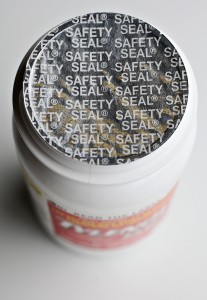A Brief
It is 1982 in Chicago. Postal worker Adam Janus takes a sick day due to chest pain. Like most would, he reaches for his favorite painkiller, in this case, a tylenol.
Hours later, Adam Janus is dead. So are two of his family members.
A local 12 year old is in pain; she, too, takes Tylenol, this time extra strength. Like Janus, she ends up in the morgue.
Similar cases persist. One thing is clear: People are dying, and it certainly is not because of old age.
Into The Lab
Chicago public service officials are panicking; they do not want residents to keep on dying; they get paid to keep them alive. They are stumped. Finally after every factor is isolated, the police realize all the deceased self-administered Tylenol. After conclusive testing in the lab, it is found that all the bottles that were tested have traces of cyanide inside the pills.
The Aftermath
Johnson and Johnson, the manufacturer of the Tylenol bottles in question, investigates the situation themselves. Within the week, the investigation concludes. After discussion with police, Johnson and Johnson determine that someone tampered with the bottles, post production. Keep in mind that at this point, medication bottles did not have tamper proof seals. Without hesitation, a nationwide recall of Tylenol is issued. The worth of the products recalled was over $250 million in todays currency. That was the loss of Johnson and Johnson. They viewed the loss as simply a negative side effect of saving lives.
Why It Matters
The Chicago Tylenol murders was one of the most crucial events for those who live today.
One of the most important things the general public gained from this unfortunate event was the introduction of tamper evident seals on medications. While most people view those seals on food and drug packaging as a nuisance, they are actually a response to protect the public from this ever happening again.
In Johnson and Johnson, the world has also gained an example: Profit should never come before human lives. This is an exemplification of the oft misquoted line “first do no harm,” said by the Father of Medicine, Hippocrates.
Note: in writing this, the following sources were of great help to me.
Bergmann, Joy (November 2, 2000). “A Bitter Pill – Someone Killed Seven People by Putting Cyanide in Tylenol Capsules – When James Lewis Was Caught for Writing an Extortion Letter, Prosecutors Appeared To Stop Looking for the Killer – Almost 20 Years Later No One Has Been Convicted of the Murders”. Chicago Reader. Retrieved 23 Oct. 2018.
Douglas, John E.; Olshaker, Mark (1999).
The Anatomy of Motive – The FBI’s Legendary Mindhunter Explores the Key to Understanding and Catching Violent Criminals. New York City: Scribner. pp. 103–104. ISBN 0-684-84598-9. Jerry Knight (October 11, 1982). “Tylenol’s Maker Shows How to Respond to Crisis”. The Washington Post. p. WB1.
“5 Crisis Management Truths from the Tylenol Murders”. 4 October 2012.
